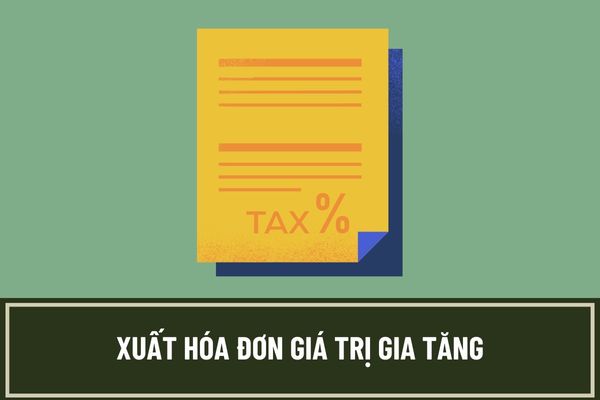Does the Branch Office Need to Issue a Value-Added Tax Invoice for Promotional Goods to the Buyer?
What are the forms of exploitation and use of electronic invoice information on the electronic information portal?
Pursuant to Article 47 of Decree 123/2020/ND-CP, the forms of exploitation and use of electronic invoice information on the electronic information portal are regulated as follows:
- Users of the information include enterprises, economic organizations, households, and individual business persons who sell goods and provide services; organizations and individuals who purchase goods and services access the electronic information portal of the General Department of Taxation to look up electronic invoice information according to the contents of the electronic invoice information.
- Users of the information are state management agencies, credit institutions, and organizations providing electronic invoice services that have signed information exchange regulations or contracts, must register and be granted access, connection, and use of electronic invoice information from the General Department of Taxation as follows:
+ Apply a legally effective digital signature as prescribed by law.
+ Encrypt the transmission path.
+ Ensure information security as prescribed by law.
+ Comply with the technical requirements announced by the General Department of Taxation, including: Information criteria, data format, connection method, information exchange frequency. Users of the information as specified in Clause 2, Article 47 of Decree 123/2020/ND-CP are responsible for assigning a contact point to register for the use of electronic invoice information and notifying the General Department of Taxation in writing.

Does the branch of the company need to issue a VAT invoice for promotional goods to the buyer?
Does the branch of the company need to issue a VAT invoice for promotional goods to the buyer?
Pursuant to point d, clause 3, Article 13 of Decree 123/2020/ND-CP regulated as follows:
Application of electronic invoices when selling goods and providing services
3. Regulations on the application of electronic invoices, delivery notes cum internal transportation, and delivery notes for goods sent for sale to agents for some specific cases as required by management are as follows:
...
d) Business organizations declare and pay VAT by the deduction method when transferring goods to dependent accounting units such as branches, stores in other localities (provinces, centrally run cities) for sale or transferring among branches, dependent units; delivering goods to agents for true price sale and commission enjoyment, depending on the manner of business organization and accounting, the facility can choose one of the following ways to use invoices and documents:
- Use electronic VAT invoices as the basis for payment and VAT declaration and payment at each unit and independent stage;
- Use the internal transportation cum delivery note; use the delivery note for goods sent for sale by agents according to regulations for goods delivered to agents for sale.
Dependent accounting units, branches, stores, and agents must issue invoices according to regulations and deliver them to the buyer when selling goods, and concurrently make sales reports and send them to the unit that transferred the goods or the unit that delivered the goods for sale (collectively referred to as the delivery unit) for the delivery unit to issue VAT invoices for the actual quantity of goods sold delivered to dependent accounting units, branches, stores, agents.
In case the unit has a large number of goods and sales volume, the sales report can be made every 5 or 10 days. In case goods sold have different VAT rates, the sales report must be made separately for goods sold according to each tax rate group.
Dependent accounting units, branches, stores, and agents declare and pay VAT for sold goods to buyers and are allowed to declare and deduct input VAT according to VAT invoices issued by the delivery unit.
In case dependent units of agricultural, forestry, and fishery business establishments that have registered and apply VAT declaration and payment by the deduction method, buy goods that are agricultural, forestry, and fishery products to transfer, sell to the main office of the business establishment, the dependent unit shall use the internal transportation cum delivery note, not the electronic VAT invoice, when transferring and selling.
...
According to the above regulations, when promoting goods, the company's branch still has to issue a VAT invoice to the buyer to deduct input VAT.
What are the contents recorded on the invoice?
Pursuant to Article 10 of Decree 123/2020/ND-CP, the contents recorded on the invoice are regulated as follows:
- Invoice name, invoice code, invoice sample code. Specifically as follows:
+ The invoice name is the name of each type of invoice prescribed in Article 8 of this Decree and is shown on each invoice, such as: Value-added invoice, value-added invoice cum tax refund declaration, value-added invoice cum receipt, sales invoice, public property sales invoice, stamps, tickets, cards, national reserve goods sales invoice.
+ Invoice sample code, invoice code according to the guidance of the Ministry of Finance.
- The name of the invoice copy applies to invoices printed by tax authorities following the guidance of the Ministry of Finance.
- Invoice number
- Name, address, tax identification number of the seller
- Name, address, tax identification number of the buyer (if any)
- Name, unit of calculation, quantity, unit price of goods/services; amount without VAT, VAT rate, VAT amount according to each tax rate type, total VAT amount, total payment amount including VAT.
- Seller's signature, buyer's signature
- The time of invoice issuance follows the format of the Gregorian calendar date, month, year.
- The time of electronic invoice digital signing.
- Tax authority code for invoices with a tax authority code.
- Fees and charges belonging to the state budget, trade discounts, promotions (if any).
- Name, tax code of the invoice printing organization for invoices printed by tax authorities.
- Characters, numbers, and currency shown on the invoice.
- Other contents on the invoice such as information about logos or logos to show the brand, trademark, or representative image of the seller.
LawNet
